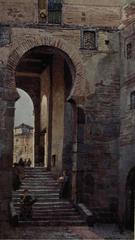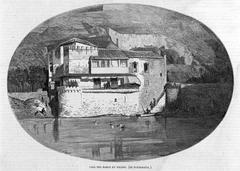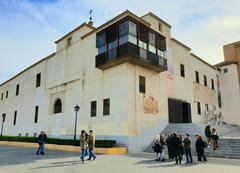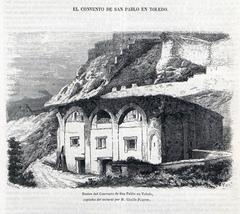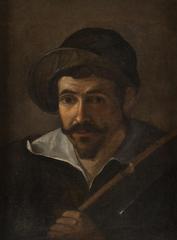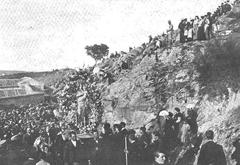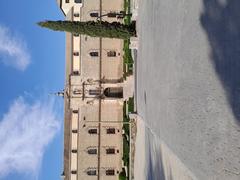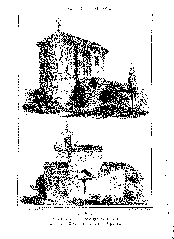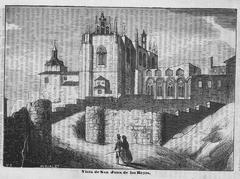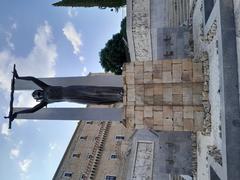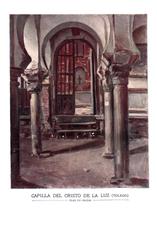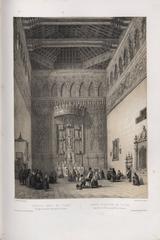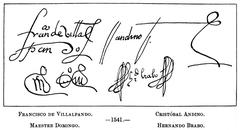
Plaza de Zocodover Toledo: Visiting Hours, Tickets, and Historical Sites Guide
Date: 04/07/2025
Introduction
Plaza de Zocodover is the beating heart of Toledo, Spain—a vibrant public square steeped in centuries of history and pulsating with modern life. Its origins as a medieval livestock market, its architectural evolution, and its central role in civic and cultural events make it a must-visit for anyone exploring Toledo’s historical depths. This comprehensive guide details the plaza’s history, significance, visitor information, architectural highlights, and practical travel tips to help you make the most of your visit.
(Toledo Turismo, Spain.info, historiasdetoledo.com, Toledo Travel Guide)
Historical Overview
Origins and Etymology
Plaza de Zocodover’s roots stretch back to the early Middle Ages under Muslim rule. The name derives from the Arabic “sūq ad-dawābb,” meaning “market of beasts of burden,” reflecting its original function as a livestock market. After the Christian reconquest by Alfonso VI in 1085, the square maintained its commercial vitality and blossomed into Toledo’s principal civic center (Toledo Turismo).
Medieval and Renaissance Transformations
Through the Middle Ages, the plaza witnessed public festivals, markets, tournaments, and even executions. Its design adapted to the city’s hilly terrain, giving it an irregular shape. In the 16th century, architect Juan de Herrera led significant reforms, introducing arcades and a more regularized structure, which enhanced its function as Toledo’s administrative and social nucleus (Spain.info).
Role in the Spanish Inquisition
A less celebrated chapter is the plaza’s use for public autos-da-fé—Inquisition rituals and executions—which drew crowds and underscored its prominence in religious and judicial affairs (Encyclopedia Britannica).
Urban Development and Architectural Evolution
The plaza’s architecture reflects Toledo’s multicultural influences, from Mudéjar to Renaissance and Baroque. After a destructive fire in 1589, it was rebuilt with orderly arcades and a rectangular layout. Later centuries introduced modern amenities such as lighting and tramways while preserving its historic essence (Toledo Turismo).
Cultural Significance
Plaza de Zocodover is the symbolic and practical center of Toledo. It has hosted royal proclamations, military parades, and major civic celebrations. During the Peninsular War, it was a battleground between French and Spanish forces. Today, it is central to festivals like Semana Santa and Corpus Christi and serves as a stage for contemporary concerts, markets, and public gatherings (Spain.info).
The square’s enduring presence in literature (referenced by Cervantes) and art further cements its place as a cultural icon (historiasdetoledo.com).
Layout, Architecture, and Notable Features
Layout and Location
Situated at the core of Toledo’s old town, Plaza de Zocodover is a slightly elevated, open rectangular square. Its central location provides easy access to major historic sites such as the Alcázar, Toledo Cathedral, and the Santa Cruz Museum (Wikipedia, Toledo Spain Click).
Architectural Styles
- Moorish Influence: Evident in some facades and the plaza’s souk-like layout (Wikipedia).
- Renaissance and Baroque Elements: Introduced during 16th-century reforms; arcaded porticoes are a hallmark (Wikipedia).
- Urban Features: Arcaded walkways, a Renaissance-style central fountain, and historic buildings like the Ayuntamiento Viejo, Casa de la Antonáda, and Iglesia de San Nicolás define the square (Libreria Los Editores).
Integration with the City
The plaza’s open design offers panoramic views, spatial relief from Toledo’s narrow medieval streets, and direct links to prominent landmarks (World City Trail).
Visitor Information
Visiting Hours
- Plaza de Zocodover: Open to the public 24/7, year-round (Toledo Travel Guide).
- Nearby Monuments: Hours vary. Alcázar of Toledo (typically 10:00 AM–6:00 PM), Santa Cruz Museum (10:00 AM–5:00 PM, closed Mondays).
Tickets
- Entry to the Plaza: Free.
- Monuments: Tickets required for sites like the Alcázar and Cathedral. The Toledo Tourist Bracelet (€10) offers access to multiple sites and is cost-effective for sightseeing (Spanish Nomad).
Accessibility
- Wheelchair Access: Plaza is flat and paved, but some nearby streets are steep or cobbled.
- Public Transport: Multiple city bus lines, nearby parking (Parking del Miradero), and the tourist train serve the square (Travel Infused Life).
Amenities
- Tourist Information Office
- Shops and Cafés: Local crafts, marzipan, tapas, and regional wines available.
- Public Wi-Fi: Available in some areas and most cafés.
- Restrooms: Located nearby, sometimes with a small fee or purchase required.
Activities and Experiences
Events and Festivals
- Semana Santa: Major processions pass through the square.
- Corpus Christi: Grand religious and cultural celebrations.
- Christmas: Nativity scenes, markets, and public festivities.
- Other Events: Open-air concerts, artisan fairs, and book markets (toledoguiaturisticaycultural.com, Tours Gratis).
Guided Tours
Plaza de Zocodover is the main starting point for guided walking tours, including the “Tour of the Three Cultures.” Both free and paid tours are available, covering history, architecture, and local legends (Libreria Los Editores, Spanish Nomad).
Dining, Shopping, and Leisure
- Dining: Numerous cafés and restaurants with terrace seating—ideal for people-watching and enjoying local cuisine.
- Shopping: Artisan swords, damascene jewelry, ceramics, and marzipan.
- Evening: The square is enchanting at sunset or under festive lights.
Practical Tips
- Best Time to Visit: Early morning for tranquility and photography; late afternoon/evening for lively ambiance.
- Duration: Most visitors spend about one hour, but you’ll pass through often while exploring.
- Footwear: Comfortable shoes recommended due to cobblestones in surrounding streets.
- Safety: Generally safe, but as with all tourist areas, keep an eye on belongings.
Frequently Asked Questions (FAQ)
Q: What are the visiting hours for Plaza de Zocodover?
A: The plaza is open 24/7. Monuments have their own schedules.
Q: Is there an entry fee?
A: Access to the plaza is free. Tickets are required for nearby attractions.
Q: Is the plaza accessible for wheelchairs?
A: Yes, though some surrounding streets may be challenging.
Q: Where can I join a guided tour?
A: Tours frequently begin at the plaza—book online or with local guides on site.
Q: What’s the best time for photography?
A: Early morning or sunset offers the best light and fewer crowds.
Visuals and Media
Insert high-quality images:
- “Plaza de Zocodover arcades and fountain at sunset”
- “Crowds at Plaza de Zocodover during Corpus Christi”
- “Panoramic view of Toledo from Zocodover”
Embed interactive map showing Zocodover’s location and nearby attractions.
Conclusion and Recommendations
Plaza de Zocodover is more than a square—it’s the living, breathing soul of Toledo. Its rich history, architectural beauty, and vibrant social scene make it the ideal starting point for your journey through Toledo’s historical sites. Enjoy a coffee in the arcades, join a guided tour, or immerse yourself in a festival—the experiences are as diverse as the city’s heritage.
For a seamless trip, download the Audiala app for guided tours, event schedules, and travel tips. Explore more on Toledo’s treasures in our related articles and stay connected with the latest travel inspiration via social media.
References and Further Reading
- Plaza de Zocodover: Visiting Hours, Tickets & Historical Significance in Toledo, 2025, Toledo Turismo
- A Complete Guide to Plaza de Zocodover in Toledo: Visiting Hours, Tickets, and Nearby Attractions, 2025, Spain.info
- Plaza de Zocodover in Toledo: Visiting Hours, Tickets, and Cultural Significance, 2025, historiasdetoledo.com
- Visitor Experience and Practical Information, 2025, Toledo Travel Guide
- Plaza de Zocodover, Wikipedia
- Toledo Spain Click
- World City Trail
- Libreria Los Editores
- Tours Gratis
- Spanish Nomad
- Travel Infused Life
- Ideoviajes
- TripHobo
- toledoguiaturisticaycultural.com



